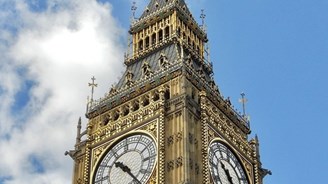Tax relief for buildings

Under the rules businesses chargeable to either income or corporation tax will be able to claim relief over a 50-year period, as a deduction from their profits at an annual straight-line rate of 2%.
The framework for the new SBA is included in the Finance Bill currently progressing through Parliament but the fine details of the rules will be set by Regulations. This article therefore considers some of the key features from the information available so far.
When does it start?
The announcement was that expenditure incurred on or after 29 October 2018 would qualify but that is not accurate. In fact, the starting point is to consider the date the contract is entered into. The following statement appeared in the Technical note on SBA published on 29 October
‘The relief will apply… where all the contracts (not letters of intent) for the physical construction works of the structure or building (including any contract for preparatory works) are made in writing and are entered into (signed and dated by the bound parties) on or after 29 October 2018.’
A similar statement was made for conversions and improvements.
This means that a partially completed new commercial building at 29 October 2018 will not qualify in respect of the balance of the expenditure, albeit incurred on or after 29 October 2018. This is a little unfair and is likely to encourage attempts to revise contracts to obtain the relief but of course there will be anti-avoidance rules.
What types of buildings and structures will qualify?
Relief is available for UK and overseas structures and buildings, where the business is within the charge to UK tax, whether corporation tax or income tax. This could be trading or investment activity such as property letting businesses. It is set to include offices, retail and wholesale premises, walls, bridges, tunnels, factories and warehouses.
What about residential property?
No surprises here - the answer is generally No, but more specifically in the technical note:
‘Expenditure on residential property and other buildings that function as dwellings will not qualify for the SBA. Dwellings are buildings primarily intended or used for long-term residence. This would include university or school accommodation, military accommodation and prisons. Premises used as hotels and care homes will qualify for the SBA. …There will be no relief for expenditure on workplaces that are an integral part of a dwelling, such as home-offices.’
Whilst the above gives a general idea of what is included or excluded, there is no detailed definition of dwelling yet for this relief. There is to be consultation on this before it is set in legislation and naturally there will be provisions to halt the claiming of SBA where a building in qualifying use is changed into a dwelling.
Land costs or rights over land will not be eligible for relief. This includes any legal costs and stamp duty, or any costs attributable to the obtaining of planning permissions, including the costs of public inquiries.
Who can claim and when?
Relief for the SBA will be available to a person that has the relevant interest in the structure or building. This will be the freeholder or a relevant leasehold interest. Provisions will be included to clarify how SBA will work in leasing arrangements to ensure the position of the lessor and the lessee is clear.
The allowance starts to be claimed from when the structure or building is brought into use for the first time for a qualifying activity and expenditure will qualify if incurred in the seven-year period prior to the commencement of that activity.
Where an asset ceases to be used for an activity that qualifies for relief, then relief can be claimed for a further period of up to two years. This might include a situation where a building is damaged and reconstruction is needed. Special rules will apply where the position extends beyond two years in specific circumstances like demolition.
What happens on change of ownership?
Where a qualifying asset on which SBA has been claimed is sold, the new owner will be able to claim the annual relief for the remaining part of the 50-year period if it continues to be used for a qualifying activity. Relief for the period in which the disposal takes place will be apportioned. In other words, there will be no balancing adjustments on disposal.
However, for chargeable gains purposes a person’s allowable cost of the asset will be reduced by the total amount of relief that they have claimed.
What happens next
The government will publish a draft of the proposed secondary legislation on the SBA, and will consult on it over the winter, ahead of this being laid before Parliament after Royal Assent is granted to the Finance Bill.
Advise your clients on the potential impact of capital allowances changes announced in the Budget with a client letter.




